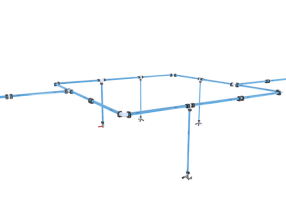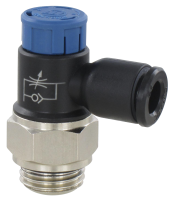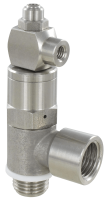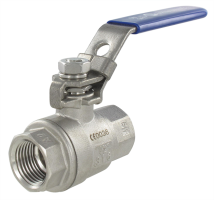How to optimise your compressed air piping system?

In the industrial sector, compressed air plays a crucial role in a wide range of applications, from manufacturing to assembly to powering machinery. However, effectively managing compressed air requires careful attention to detail to ensure optimal performance and efficient energy use. Indeed, poorly designed or maintained compressed air networks can lead to significant energy losses, costly downtime, and decreased productivity. That's why it's essential for businesses to understand the importance of optimizing their compressed air network to maximize operational efficiency and reduce costs. In this regard, this introduction will explore the key aspects of optimizing compressed air networks and the benefits it can bring to industrial enterprises.
To ensure the proper functioning of a compressed air network, it is crucial to consider and control various parasitic phenomena that can disrupt its effectiveness. Among these phenomena are:
- Vibrations: Vibrations can be generated by compressors, pneumatic equipment, or even by the passage of compressed air through pipelines. They can cause damage to the network components and compromise its structural integrity.
- Expansion/contraction: Temperature variations can cause the expansion or contraction of the materials constituting the compressed air network. If these variations are not taken into account, they can cause mechanical stress on the pipes and fittings, leading to leaks or ruptures.
- Condensates: Moisture contained in compressed air condenses when it cools as it passes through pipelines. This accumulation of condensates can lead to corrosion of the network components and reduce the quality of the compressed air, which can affect the performance of the equipment powered by this network.
- Pressure losses: Pressure losses occur when compressed air encounters obstacles or changes direction in the network, resulting in a decrease in its pressure and flow rate. These pressure losses can reduce the system's efficiency and require overcompensation from compressors, leading to increased energy consumption.
In order to optimise the performance of your compressed air piping system and to work in the best conditions, it is essential to follow the following 6 basic rules:
Indeed, the closed-loop configuration allows pressure losses to be reduced by half compared to an antenna configuration.

Choosing the right tube diameter for your application will save energy, which in the medium to long term can be very beneficial. We also emphasize the importance of choosing aluminum tubes. We invite you to refer to our article addressing this topic: Why choose SENGA aluminium tubes for your compressed piping system?

Vibrations can have a negative effect on your air system, especially in the attachment of the tubes. For better safety, it is strongly recommended to connect the compressor with a suitable hose.

ΔL = ΔT x L x a
ΔL [mm] :linear expansion or contraction
ΔT [°C] : temperature variation between the use temperature and the network installation temperature
L [m] : total length of the network
a = 0,024 [mm/(m°C)] : coefficient of thermal expansion of aluminium



Conclusion
In conclusion, many parasitic phenomena can threaten the operation of your compressed air network: vibrations, thermal expansion or contraction, condensate formation, energy losses, etc. Optimizing your compressed air network appears essential to ensure its effectiveness, reliability, and durability. By adhering to the six rules outlined, you can maximize the performance of your system, reduce energy losses, and prevent the risks of failure. By constructing the network in a closed loop, carefully selecting tube diameters, accommodating thermal variations, and ensuring secure fastening, you can significantly improve the productivity of your installation while reducing operating and maintenance costs. Opting for quality solutions like those offered by SENGA enables you to achieve these objectives while ensuring the safety and performance of your compressed air system.
Discover our wide range of pipes and fittings for your compressed air piping system




